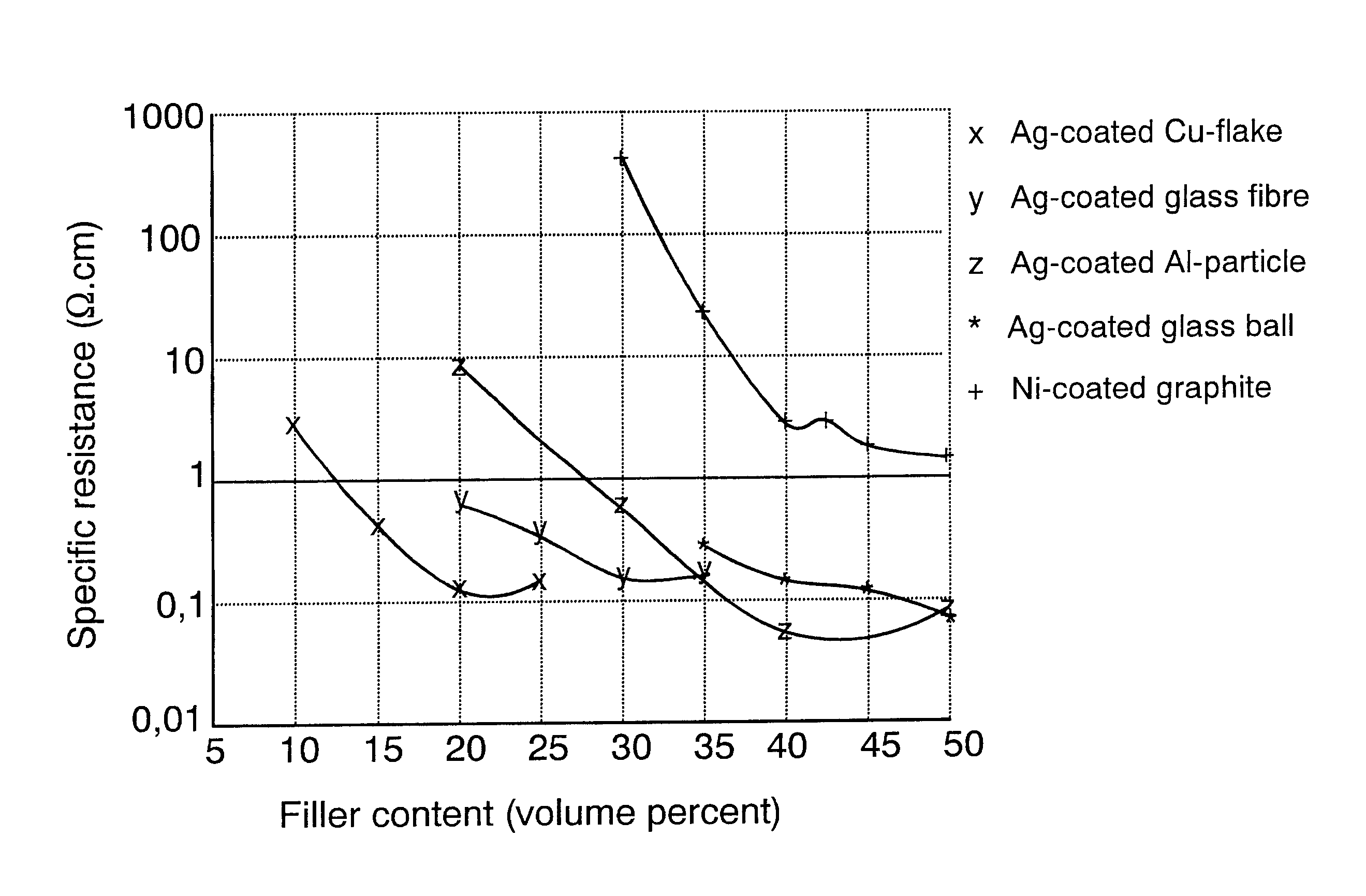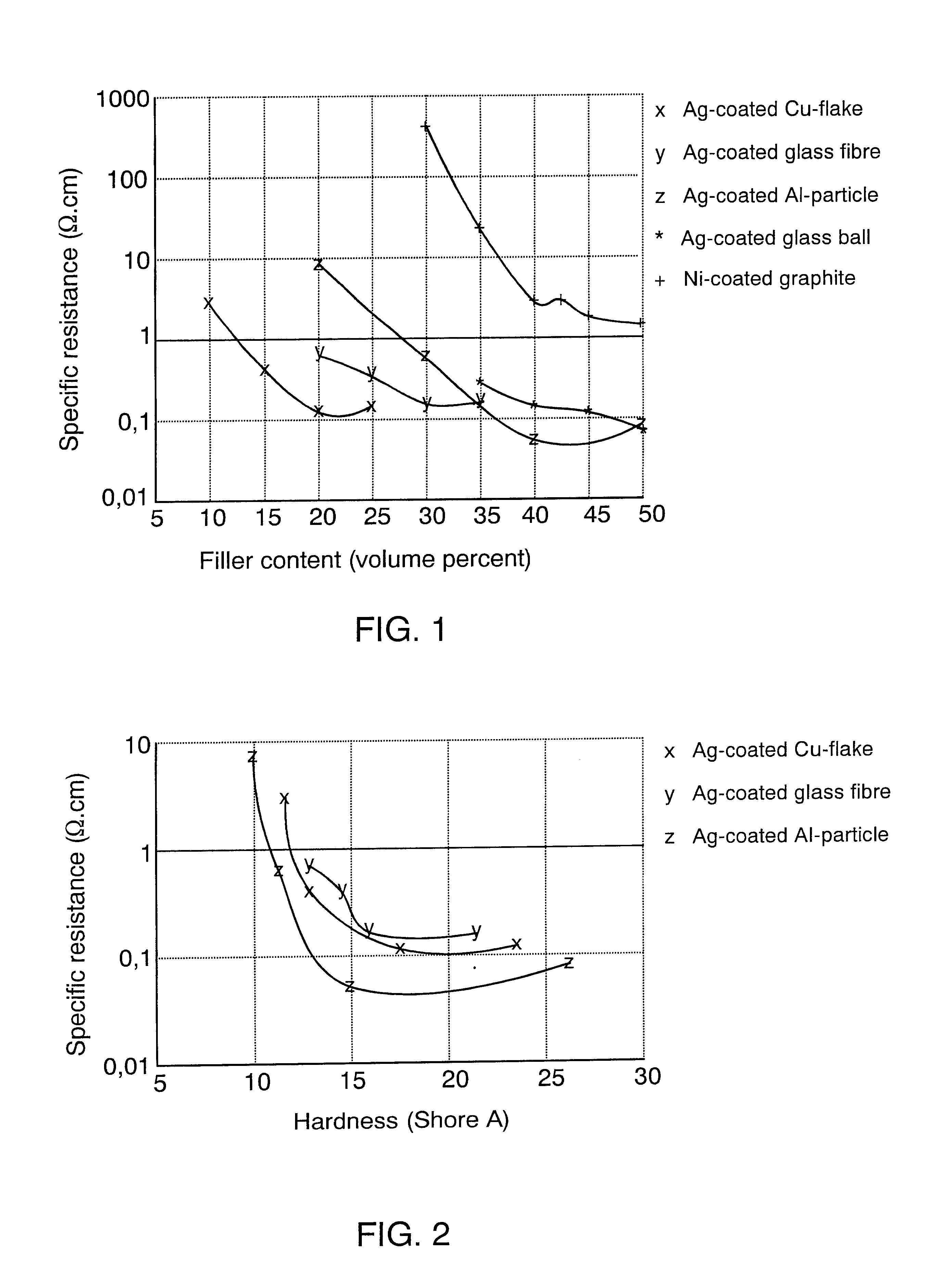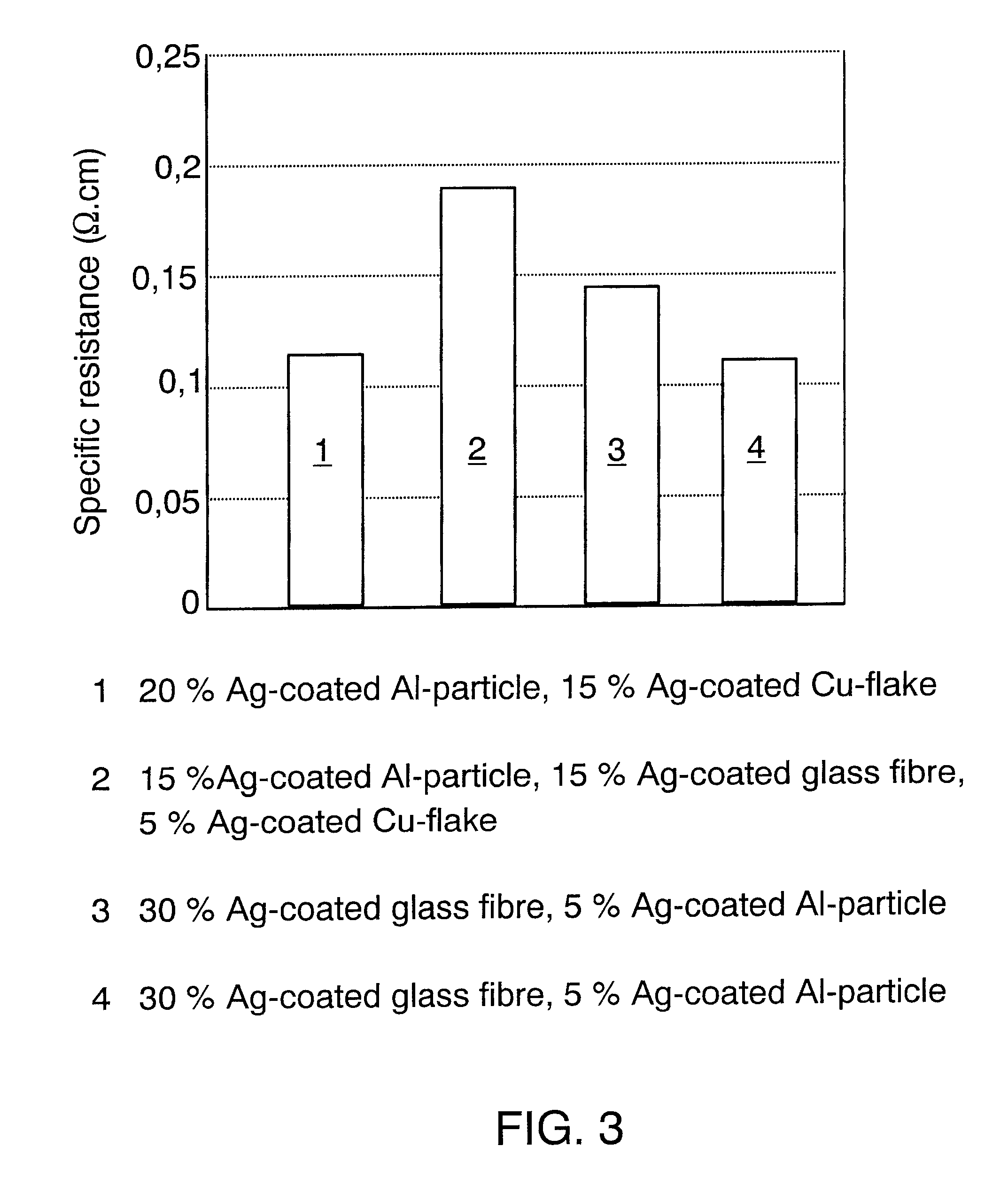Electrically conductive thermoplastic elastomer and product made thereof
- Summary
- Abstract
- Description
- Claims
- Application Information
AI Technical Summary
Benefits of technology
Problems solved by technology
Method used
Image
Examples
example 2
The TPE was formed of a matrix material and a filler, and test pieces were manufactured as described in example 1. The specific resistance of the TPE was determined as in example 1. The material hardness described in FIG. 2 was determined according to standards ASTM D2240 and DIN 53505 with a durometer type A.
As seen in FIG. 2, the hardness of the TPE of the invention using all fillers and filler contents measured in the example is in the range of 10 to 25 Shore A, which makes additional filling of the TPE possible using fire retardants or other application-specific additives, for instance, so that the material hardness remains at the level required of sealing materials. It should be noted that one TPE of the invention, injection-molded into a sealing, has reached an approximately 40 dB attenuation at the frequency range of 20 to 700 MHz. The specific resistance value measured in a corresponding TPE material is approximately 0.1 .OMEGA..cm. In other words, the TPE of the invention i...
example 3
A SEPS-based matrix material (trade name Kraiburg TP1AAA) was melted in a mixer at an increased temperature in the same conditions as in example 1. Fillers were added one after the other and as quickly as possible to the melted matrix material, the fillers being:
PUM
| Property | Measurement | Unit |
|---|---|---|
| Fraction | aaaaa | aaaaa |
| Fraction | aaaaa | aaaaa |
| Electrical conductivity | aaaaa | aaaaa |
Abstract
Description
Claims
Application Information
 Login to View More
Login to View More - R&D
- Intellectual Property
- Life Sciences
- Materials
- Tech Scout
- Unparalleled Data Quality
- Higher Quality Content
- 60% Fewer Hallucinations
Browse by: Latest US Patents, China's latest patents, Technical Efficacy Thesaurus, Application Domain, Technology Topic, Popular Technical Reports.
© 2025 PatSnap. All rights reserved.Legal|Privacy policy|Modern Slavery Act Transparency Statement|Sitemap|About US| Contact US: help@patsnap.com



